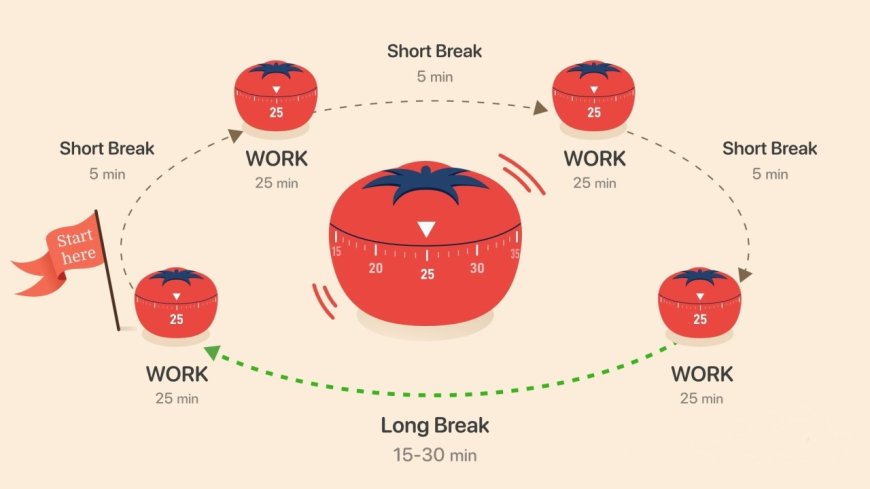The 25-Minute Productivity Myth: How Structured Breaks, Not Sprints, Drive Peak Performance
Stop measuring productivity in continuous work blocks. Learn the science of Ultradian Rhythms and how leveraging strategic 5-minute breaks—not the 25-minute sprint—is the real key to eliminating burnout and achieving Deep Work consistently.

Think about your last "focus" session. You sat down, silenced your phone (maybe), and promised yourself you wouldn't move until the task was done. An hour later, you felt exhausted, you checked your phone twice, and you were barely halfway finished.
This is the 25-Minute Productivity Myth in action. We are trained to believe that the longer we sit, the more we accomplish. But neuroscience proves the opposite: your brain simply isn't designed for marathon sessions. In fact, trying to force hours of non-stop work is the fastest route to burnout and shallow thinking.

The real secret to Deep Work isn't how hard you sprint—it’s how strategically you stop.
The Simple Italian Idea That Changes Everything
In the late 1980s, an Italian consultant named Francesco Cirillo used a simple kitchen timer shaped like a tomato (a pomodoro in Italian) to manage his study time. He discovered a pattern that instantly unlocked intense, high-quality focus.
The system is so simple it sounds ridiculous, yet it works because it hacks two fundamental laws of your brain:
The Urgency Hack: The Power of 25 Minutes
Your brain loves deadlines. When you look at a huge, complex task, your brain says, "I'll do that later." But when you tell your brain, "You only have to focus for 25 minutes," the resistance melts away.
- The Rule: Once the timer starts, you must work on one single task. No email, no quick phone checks, no switching tabs. If you get interrupted, you must stop the timer and start the 25 minutes over. This teaches your brain that the commitment is serious.
The Recharge Hack: The Critical 5-Minute Break
This is where the real magic happens. The 5-minute break is not a reward; it is mandatory maintenance.
- The Science: Your brain naturally operates on Ultradian Rhythms—cycles where we hit a peak of focus, followed by a necessary dip. That peak lasts about 20–30 minutes. If you skip the break, your performance drops off a cliff.

- The Break Rule: Do not spend your 5 minutes relaxing at your desk. Stand up. Stretch. Look out the window. Hydrate. Your cognitive resources can completely reset as a result of this physical and mental shift, making the subsequent 25-minute sprint just as sharp as the first.
How to Master the 4-Step Focus Flow

Think of this as your brain's new operating system:
| s.no | Step | Time | The Goal | Why It Works |
| 1. | Focus Sprint | 25 Minutes | Commit 100% to one specific task. | Creates urgency and overcomes procrastination. |
| 2. | Short Break | 5 Minutes | Step away completely to reset your mind. | avoids mental stress and burnout |
| 3. | Keep a log and tally | Quick Check | Mark down the completed Pomodoro. | Provides a satisfying sense of progress and responsibility. |
| 4. | Long Recharge | 15–30 Minutes | Every four cycles, take a lengthy break. | Critical for sustained energy and recovering deep focus. |
The True Measure of Success
Stop counting the hours you sat at your desk. Start counting the Pomodoros you complete.

This method doesn't just manage time; it manages your energy and attention. You can unlock a level of project velocity and focus you never knew you had by embracing the myth that you should work nonstop and instead appreciating the power of the strategic 5-minute stop.
Ready to trade long, stressful hours for short, high-impact sprints? Your timer is waiting.
What's Your Reaction?
 Like
1
Like
1
 Dislike
0
Dislike
0
 Love
0
Love
0
 Funny
0
Funny
0
 Angry
0
Angry
0
 Sad
0
Sad
0
 Wow
0
Wow
0























































































































































































